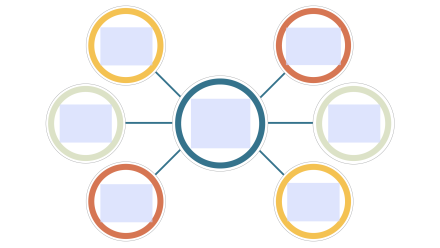Download a Graphic Organizer
A concept map can be used before reading to activate what knowledge students have about a topic or familiarity with a word, and during and after reading to capture students’ newly acquired knowledge. There are several types of concept maps. Some concept maps are hierarchical, while others connect information without categorizing ideas. Most are comprised of words or phrases surrounded by a circle or square that connect to one another and ultimately back to the main idea through graphic lines. The visible connection between ideas creates concrete tethers that help students build wider conceptual understandings of words and topics.


Why use concept maps?
Concept maps have been shown to support readers by building off of students’ prior knowledge and asking them to reflect on their understanding during and after reading. Teachers love them because they provide a big picture of a concept and concretely show how small details and information are connected to the big idea. They are also easy to construct, can be used across all disciplines, and can be a powerful support to organizing students’ writing.
How to create and use them
There are several ways to construct concept maps for middle and high school students. Most include the following steps:
- Model for your students how you identify the major ideas presented in a reading as you read.
- Organize your ideas into categories if applicable to the type of concept map you chose. Remind students that your organization may change as you continue to read and add more information.
- Use lines or arrows to represent how ideas are connected to one another, a particular category, and/or the main concept.
You can use concept maps as a pre-reading strategy by inviting students to share what they already know about a particular concept. As students begin reading and adding to the map, they are able to meld their prior knowledge with new information they have gathered from their reading. After students have finished the guide, encourage them to share their concept maps with one another in pairs or small groups. This will allow students to share and reflect on how they each interpreted the connections between concepts and words.
Encourage students to use the concept map to summarize what they have read, organize their writing on the concept, or to create a study guide for their own studying.
Strategy in action
Let’s listen to a high school science teacher discuss why and how she uses concept maps in her instruction
Tips for success
- If you are using a concept map with a textbook reading, it’s an optimal time to discuss the importance of text headers and sub-headers, which can easily be represented in a concept map.
- There are many concept maps to choose from. We have provided you with a fillable pdf template of one but if your students need something different, consider making your own in a Word or Google doc.
- Using a concept map with a hierarchical structure can be very useful for helping students organize their ideas for writing.
